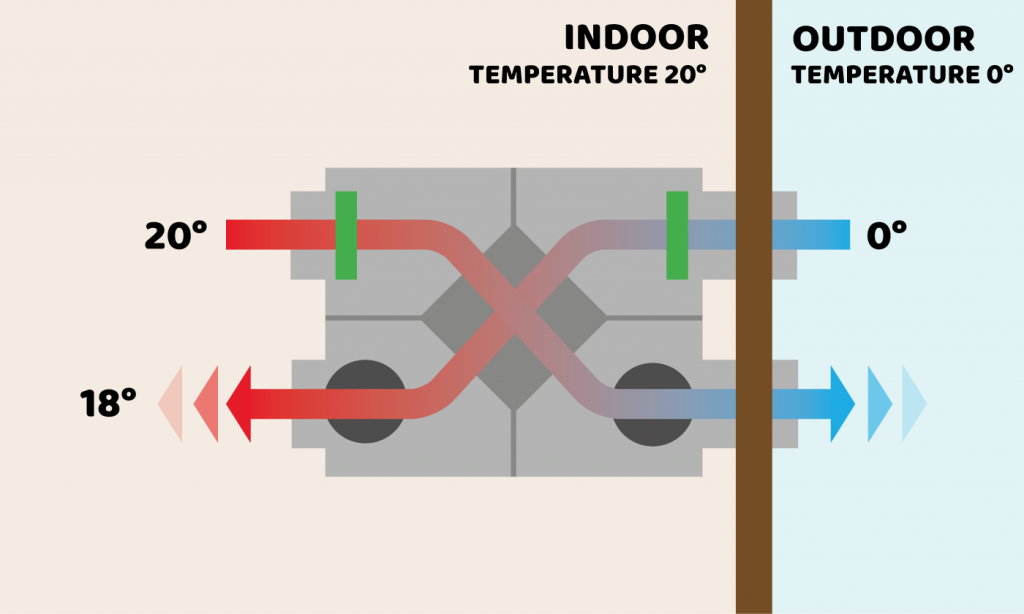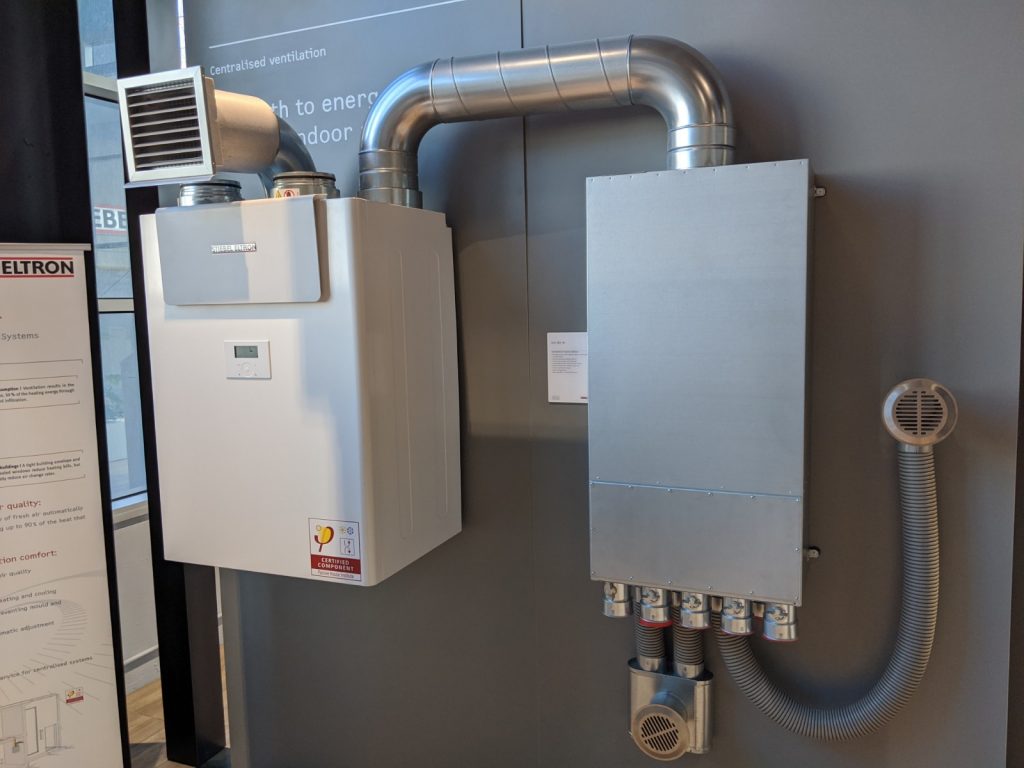The All-Inclusive Overview to the Uses of Heat Recovery Ventilation in Modern Structures
Heat Recovery Ventilation (HRV) systems stand for a significant advancement in constructing technology (HRV Heat Recovery Ventilation). They give a method for trading stale interior air with fresh exterior air while decreasing power loss. This method not just improves indoor air quality but likewise adds to power efficiency in both residential and business buildings. Recognizing the numerous applications and advantages of HRV can expose its vital duty in modern-day design and sustainability efforts. The ramifications of this innovation are worth discovering better
Recognizing Heat Recovery Ventilation Solutions

Although several contemporary structures focus on power performance, understanding warmth healing air flow (HRV) systems is important for optimizing interior air quality and reducing energy consumption. HRV systems function by transferring warm from stale indoor air to inbound fresh air, effectively keeping comfortable indoor temperatures while minimizing power loss. These systems include a warmth exchanger, followers, and ductwork that promote the blood circulation of air. During winter, HRV units catch and reuse warmth from the outgoing air, while in summer season, they can help cool incoming air. By constantly exchanging air, HRV systems also reduce moisture and the focus of indoor toxins. Appropriate setup and maintenance of HRV systems are vital for their performance and performance in enhancing general structure performance and convenience.
Benefits of Heat Recovery Ventilation
Heat recovery ventilation systems provide various benefits that enhance both energy performance and interior air quality in contemporary structures. By catching and recycling energy from exhaust air, these systems greatly minimize home heating and cooling expenses, bring about reduced power usage. Additionally, they maintain a consistent circulation of fresh outdoor air, lessening the danger of indoor air toxins and irritants. This continual exchange aids manage humidity degrees, preventing mold development and making certain a much healthier living environment. In addition, HRV systems add to sustainability objectives by decreasing overall carbon footprints. Their ability to optimize air flow without sacrificing thermal comfort makes them an important enhancement to modern structure design, advertising both economic and eco-friendly advantages.
Applications of HRV in Residential Buildings
As homeowners increasingly prioritize power performance and indoor air high quality, the applications of warm recuperation ventilation (HRV) systems in household structures have actually become a lot more common. HRV systems are particularly advantageous in securely secured homes, where preserving fresh air circulation is necessary for protecting against wetness build-up and indoor contaminants. They effectively move warmth from outward bound stagnant air to inbound fresh air, minimizing power prices related to heating and cooling. Additionally, HRVs can boost convenience degrees by controling humidity and temperature. They are likewise versatile for numerous residential layouts, consisting of single-family homes and multi-unit buildings. In general, integrating HRV systems sustains lasting living methods while guaranteeing a healthier interior atmosphere for residents.
HRV in Commercial and Commercial Settings
In commercial and industrial setups, the execution of warm recovery air flow (HRV) systems has ended up being progressively vital for maximizing power effectiveness and preserving air top quality. These systems effectively move warmth from exhaust air to inbound fresh air, minimizing the requirement for extra heating or cooling. This not just decreases power expenses yet additionally adds to sustainability efforts. Industries such as manufacturing, warehousing, and office complex profit significantly from HRV systems, as they help control temperature and humidity degrees, guaranteeing a comfortable and effective environment. HRV systems help in getting rid of pollutants and excess moisture, boosting interior air high quality. As policies around air quality come to be stricter, the fostering of HRV innovation is likely to grow, making it a critical element of modern-day business and industrial framework.
Future Trends in Heat Recovery Ventilation Innovation

Often Asked Inquiries
Just How Does Heat Recovery Ventilation Influence Indoor Air Top Quality?
Heat recovery ventilation significantly improves interior air high quality by continually trading stagnant interior air with fresh exterior air while recouping power. This procedure lowers toxins, keeps perfect humidity levels, and guarantees a healthier environment for passengers.
Can HRV Systems Be Mounted in Existing Buildings?
HRV systems can indeed be set up in existing buildings. Retrofitting might require alterations to ductwork and air flow layouts, yet it considerably improves power efficiency and indoor air top quality, making it a viable option for older frameworks.
What Upkeep Is Required for HRV Solutions?

Exist Certain Climates Where HRV Is A Lot More Efficient?
Heat recovery ventilation systems are especially efficient in climates with significant temperature level distinctions in between seasons. These systems optimize energy performance by recuperating warm from exhaust air, making them optimal for both cold and reasonably cozy atmospheres.
How Do HRV Systems Affect Power Expenses?
